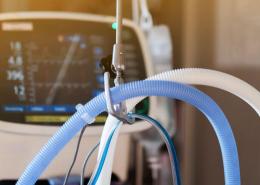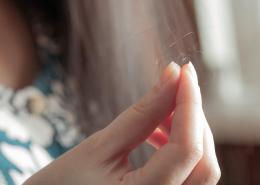How Clean Are Your Hands?
Daily commitment to good hand hygiene will help to protect not only yourself, but also those around you, against life-threatening infections every single day.
How? Well, most of the germs that make us sick are transferred through direct or indirect contact with contaminated hands or surfaces. Our hands carry on average 3,200 different germs belonging to more than 150 species – of which some can be harmful and cause infection – and improved handwashing technique can reduce their transmission.
Can you separate myth from fact when it comes to good hand hygiene? – Test your handwashing knowledge below:
1. ‘I should only use warm water to wash my hands with’ – Myth or Fact?
Myth! Water temperature does not impact the effectiveness of hand-washing. You can use warm, lukewarm or cold water to wet your hands and begin the handwashing process.
2. ‘The palm of the hand is the most commonly missed area during hand washing’ – Myth or Fact?
Myth! Fingertips and thumbs are actually most commonly missed. Be sure to lather soap all over your hands, including the thumbs, backs of hands, between your fingers and, of course, under your fingernails.
3. ‘You should scrub your hands for 20 seconds, about how long it takes to sing happy birthday twice’ – Myth or Fact?
Fact! While you might feel a bit silly singing to yourself every time you wash your hands, try to hum the tune of “happy birthday” in your head twice to remind yourself how long it takes to scrub hands thoroughly. This will help to ensure you scrub for long enough to remove more germs from your hands – 20 seconds in total.
4. ‘Using a standing bowl of water is sufficient to rinse my hands clean’ – Myth or Fact?
Myth! Using a bowl of standing water can actually increase the risk of contamination.5 Rinse your hands well under clean, running water so that bacteria are washed away. Also, remember to keep your hands pointing down so that the contaminated rinse water washes away instead of running up to your wrists and elbows!
5. ‘I don’t need to dry my hands once I have washed them’ – Myth or Fact?
Myth! Damp hands, compared to dry ones, transfer thousands more micro-organisms. So it is important to dry your hands using a clean towel or air dryer after you’ve washed them.
Want to learn more about proper handwashing techniques? Check out our new video!
[1] Review on Antimicrobial Resistance. Tackling a crisis for the health and wealth of nations. December 2014. Available at: https://amr-review.org/sites/default/files/AMR%20Review%20Paper%20-%20Tackling%20a%20crisis%20for%20the%20health%20and%20wealth%20of%20nations_1.pdf Last accessed October 2019.
[2] Global Handwashing Partnership. Why Handwashing. Available at: https://globalhandwashing.org/about-handwashing/why-handwashing/health/ Last accessed October 2019.
[3] Review on Antimicrobial Resistance. Tackling drug-resistant infections globally: final report and recommendations. May 2016. Available at: https://amr-review.org/sites/default/files/160525_Final%20paper_with%20cover.pdf Last accessed October 2019.
[4] Noah Fierer, Micah Hamady, Christian L. Lauber, and Rob Knight (2008) The influence of sex, handedness, and washing on the diversity of hand surface bacteria. PNAS: November 2009, Vol. 105, No. 46, pp. 17994-17999.
[5] Centers for Disease Control and Prevention. Show Me the Science – How to Wash Your Hands. October 2018. Available at: https://www.cdc.gov/handwashing/show-me-the-science-handwashing.html Last accessed September 2019.
[6] Royal College of Nursing. Hang hygiene. Available at: https://rcni.com/hosted-content/rcn/first-steps/hand-hygiene Last accessed October 2019.
[7] HealthEngine. Hand hygiene technique: Hand washing with soap and water. Available at: https://healthengine.com.au/info/hand-hygiene-technique-hand-washing-with-soap-and-water Last accessed October 2019.
[8] Patrick, D.R., Findon, G. and Miller, T.E., 1997. Residual moisture determines the level of touch-contact-associated bacterial transfer following hand washing. Epidemiology & Infection, 119(3), pp.319-325.
![]()





